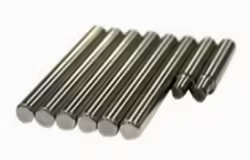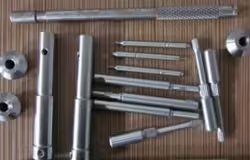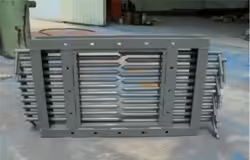
Steel Square Bar vs. Round Bar: Which One to Choose?
Table of Contents
Introduction
When it comes to selecting the right material for construction, fabrication, or manufacturing projects, choosing between a steel square bar and a round bar can make a significant difference in performance and cost-effectiveness. Both types of bars have distinct shapes and characteristics that make them suitable for different applications. Understanding the differences between a steel square bar and a round bar can help you make an informed decision tailored to your project’s specific requirements. In this comprehensive guide, we will explore the properties, advantages, and common uses of both steel square bars and round bars to help you determine which is the better choice for your needs.
What is a Steel Square Bar?
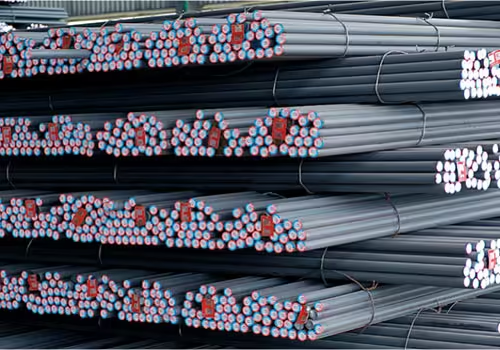
A steel square bar is a long piece of solid steel with a square cross-section. This type of bar is commonly used in construction, manufacturing, and fabrication due to its strength and versatility. Steel square bars are typically made from hot-rolled or cold-rolled steel, depending on the application and desired characteristics.
Key Characteristics of Steel Square Bar
Steel square bars are known for several defining attributes, including:
- Uniformity: The square cross-section offers consistent dimensions, making steel square bars ideal for precision applications.
- Strength: Steel square bars have excellent tensile strength and load-bearing capacity, making them suitable for structural support.
- Versatility: Steel square bars are easy to cut, weld, and machine, which makes them useful for a wide range of projects.
- Durability: Due to their strong and rigid nature, steel square bars can withstand high levels of stress and wear, making them ideal for long-term applications.
What is a Round Bar?
A round bar is a long, cylindrical piece of steel that is often used in various applications, such as manufacturing shafts, gears, and fasteners. Like steel square bars, round bars are made from hot-rolled or cold-rolled steel and offer high durability. The smooth, round cross-section makes round bars an excellent choice for projects that require rotation or other dynamic movements.
Key Characteristics of Round Bar
Round bars possess a number of advantageous properties, including:
- Smooth surface: The cylindrical shape provides a smooth surface, which is ideal for applications requiring reduced friction.
- Flexibility: Round bars can handle dynamic stresses better than square bars, making them ideal for rotating components.
- Ease of machining: Round bars are easy to machine, allowing them to be shaped into precise components such as fasteners and gears.
- Ductility: Due to their cylindrical shape, round bars offer better flexibility and are less prone to breaking under dynamic stress.
Steel Square Bar vs. Round Bar: A Comparative Analysis
Choosing between a steel square bar and a round bar depends on several factors, including the type of project, load-bearing requirements, and ease of use. Below is a comparison table outlining the key differences between steel square bars and round bars:
| Property | Steel Square Bar | Round Bar |
|---|---|---|
| Shape | Square cross-section | Circular cross-section |
| Strength | High load-bearing capacity | Adequate for dynamic applications |
| Application | Structural support, frames, and columns | Shafts, gears, fasteners |
| Machinability | Easy to machine | Easier to machine and turn |
| Flexibility | Rigid and strong, less flexible | More flexible, better for dynamic use |
| Usage | Construction, fabrication, manufacturing | Automotive, aerospace, mechanical |
| Weldability | Excellent weldability | Good weldability |
| Cost | Generally more cost-effective | Slightly more expensive depending on material |
Common Applications of Steel Square Bars
The steel square bar is a popular choice in many industries due to its versatility and strength. Here are some of the most common applications:
- Construction and Structural Support
Steel square bars are often used in construction for structural purposes, including beams, columns, and frameworks. Their square shape offers superior load-bearing capacity, making them ideal for building durable structures. - Manufacturing and Fabrication
In the manufacturing industry, steel square bars are frequently used to fabricate machine parts, tools, and equipment. Their uniform shape and high machinability make them perfect for creating precise components. - Fencing and Railings
Due to their durability and aesthetic appeal, steel square bars are commonly used in fencing and railing projects. The bars can be welded together to form strong and secure structures that offer both protection and visual appeal. - Automotive and Heavy Equipment
Steel square bars are also found in the automotive and heavy equipment industries, where they are used to manufacture frames, axles, and other structural components that require high strength and rigidity.
Common Applications of Round Bars
Round bars are one of the most versatile forms of metal, preferred in industries where strength, durability, and rotational efficiency are critical. Their uniform cylindrical shape makes them especially suitable for applications that involve rotation, machining, or dynamic movement. Below are some of the most common uses of round bars across different sectors:
Shafts and Gears
Round bars are extensively used in the manufacturing of shafts and gears, which are fundamental components in countless mechanical systems. The cylindrical form of round bars ensures smooth rotation, reduced wear, and minimal friction between moving parts. In addition, their ability to withstand high stress and torsional loads makes them a top choice for power transmission systems, industrial machinery, and heavy-duty vehicles. Whether it is in elevators, conveyor systems, or engines, shafts and gears made from round bars guarantee reliable performance over time.
Fasteners and Bolts
Another significant application of round bars lies in the production of fasteners, such as bolts, screws, studs, and rivets. These components require precise machining and threading, which round bars provide due to their consistent shape and uniform diameter. The result is a secure, tight fit that enhances the integrity of mechanical assemblies. Fasteners produced from round bars are not only used in day-to-day construction but also in high-performance environments such as aerospace, automotive, and marine industries, where safety and stability cannot be compromised.
Aerospace and Automotive Parts
In both aerospace and automotive industries, round bars serve as a foundational material for critical components. Their high tensile strength, fatigue resistance, and durability make them suitable for parts like drive shafts, axles, engine components, suspension systems, and structural reinforcements. In aerospace, round bars are often used in landing gear mechanisms, turbine shafts, and structural connectors, where precision and reliability are essential. In automotive engineering, they play a vital role in ensuring vehicles operate smoothly under dynamic and high-stress conditions.
Machined Parts
Round bars are also highly valued in the production of precision-machined parts. Their ease of machining allows manufacturers to shape them into intricate geometries and tight tolerances, enabling the creation of custom parts for specialized equipment. From industrial tools to medical instruments and from heavy machinery to consumer electronics, machined parts derived from round bars deliver both accuracy and performance. The adaptability of round bars makes them an indispensable raw material for industries that depend on precision engineering.
Factors to Consider When Choosing
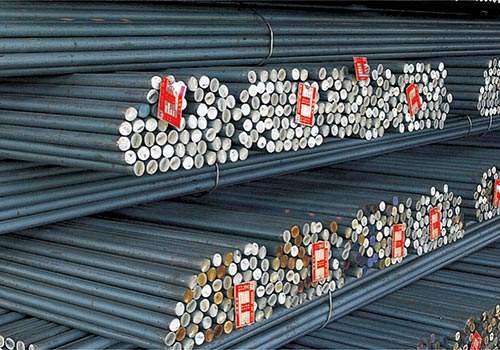
Selecting the right type of bar depends on the specific requirements of your project. Here are some key factors to consider:
Load-Bearing Requirements
If your project involves static loads or structural support, a steel square bar may be the better choice due to its rigidity and high load-bearing capacity. For dynamic applications requiring rotational movement, round bars are more suitable.
Ease of Machining
Round bars are generally easier to machine into complex shapes, making them ideal for parts like shafts and gears. If precision and complex geometry are required, round bars may be a better choice.
Cost
Steel square bars are often more cost-effective than round bars, making them a popular choice for budget-conscious projects. However, if flexibility and rotational movement are needed, round bars may offer better long-term value despite their slightly higher cost.
Weldability
Both steel square bars and round bars offer excellent weldability, but square bars may provide easier alignment for certain projects, especially in structural and fabrication applications.
Aesthetic and Functional Considerations
For projects where aesthetics matter, such as fences or railings, the uniformity of a steel square bar may be preferable. However, round bars may provide a sleeker, more modern appearance in mechanical and automotive applications.
Conclusion
Choosing between a steel square bar and a round bar ultimately depends on the specific needs of your project. Steel square bars are best suited for applications that require rigidity, strength, and a uniform shape, such as construction and structural support. On the other hand, round bars excel in dynamic applications, such as rotating machinery, automotive components, and precision-engineered parts.
Both types of bars offer excellent strength, durability, and machinability, but understanding the differences in their shapes, properties, and common uses will help you make an informed decision. Consider factors like load-bearing capacity, machinability, and cost when selecting the right bar for your project.
FAQ
What is the main difference between a steel square bar and a round bar?
The primary difference is their cross-sectional shape. A steel square bar has a square cross-section, while a round bar has a circular cross-section, making them suitable for different applications.
Which bar is stronger, a steel square bar or a round bar?
Both bars are strong, but a steel square bar offers better load-bearing capacity in static applications, while a round bar is more suitable for dynamic applications that involve rotational movement.
Can I use a steel square bar for machining?
Yes, a steel square bar is highly machinable and is commonly used in the manufacturing and fabrication of machine parts, tools, and frames.
Are square bars more cost-effective than round bars?
In general, square bars are more cost-effective due to their simplicity in manufacturing. However, the cost-effectiveness depends on the specific project requirements.
Is there a difference in the weldability of square bars and round bars?
Both types of bars offer excellent weldability. However, square bars may provide easier alignment during welding due to their flat surfaces.
What are the common applications of round bars?
Round bars are commonly used in mechanical systems for shafts, gears, fasteners, and automotive parts. Their cylindrical shape makes them ideal for applications that involve rotation.
Can I use a steel square bar in the automotive industry?
Yes, square bars are frequently used in the automotive industry for structural components like frames, axles, and brackets due to their high strength and rigidity.
Which bar is more flexible, a square bar or a round bar?
Round bars are more flexible and better suited for applications that involve dynamic stress or rotational movement.

